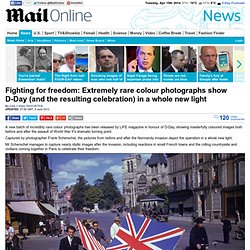

The First London House Hit In An Air Raid. Image from Google Street View.

This article was first published in September 2012. We republish to mark the 100th anniversary of the first aerial bombardment of London. This house — a seemingly anonymous and everyday part of Hackney’s housing stock — played a remarkable role in London’s history. Number 16 Alkham Road (map) in Stoke Newington was the first place in London to be attacked by a foreign military power in almost 1,000 years. It happened around 11pm on the evening of 31 May 1915. The Zeppelin moved off to the south, unloading further horrors on the capital. The attack marked the first time London had come under military attack by a foreign power since the arrival of William the Conqueror in 1066. Something to ponder next time you’re sipping a flat white in peaceful Stoke Newington: the neighbourhood not only endured London’s first air raid, but also marks the spot where a millennium-long absence of warfare came to an end.
Conflict in the Modern World - Dean Smart. Nazi Germany. World War One - The British Library. World War II Reference Material. History - World Wars: From Persecution to Genocide.
Bread omelette and fish made of rice: The ingenious (and unappetising) recipes that kept the Home Front fed in World War Two. Ingenious recipes show how wartime cooks made the most of rationsBasics like rice and potatoes used to create 'fish' and 'meat' dishes By Rosie Taylor Published: 09:07 GMT, 19 May 2013 | Updated: 09:33 GMT, 19 May 2013 Wartime food: This book is compiled from recipes read out on BBC Kitchen Front radio broadcasts Fish made from rice, duck made from sausage meat and an omelette made of bread - you would be forgiven for thinking these were dishes from a Heston Blumenthal restaurant.

But these remarkable recipes are actually the creation of resourceful World War II housewives who had to make do with meagre rations. They show how home cooks improvised with basic ingredients and food they could grow in their back gardens to concoct dishes that were otherwise unavailable in wartime Britain. Foods like duck, turkey and fish were hard to come by, so ingenious cooks made mock varieties from readily available ingredients like potatoes. British World War Two propaganda artworks released on Wikipedia. Privacy and cookiesSubscribeRegisterLog in Accessibility links Advertisement Telegraph.co.uk Friday 18 April 2014 British World War Two propaganda artworks released on Wikipedia Original Second World War artworks produced as propaganda for the Ministry of Information have gone online and are now freely available on Wikimedia Commons.

D-Day: Rare colour pictures from World War II depict invasion in whole new hue. By Daily Mail Reporter Updated: 07:56 GMT, 8 June 2012 A new batch of incredibly rare colour photographs has been released by LIFE magazine in honour of D-Day, showing masterfully coloured images both before and after the assault of World War II's dramatic turning point.

Captured by photographer Frank Scherschel, the pictures from before and after the Normandy invasion depict the operation in a whole new light. Mr Scherschel manages to capture nearly idyllic images after the invasion, including reactions in small French towns and the rolling countryside and civilians coming together in Paris to celebrate their freedom. HISTORY IN PICTURES: RARE, UNSEEN PICTURES: BE THERE: German Invasion of France: May 1940: A Picture Album. German forces take over the Maginot Line from the French.

The Line did not deter the Germans. Their strategy was to bypass it totally. Von Manstein agreed with Guderian’s plan. He only had one objection; it would create an open flank of over 220 miles, vulnerable to French counterattack. Guderian convinced him that this could be prevented by launching simultaneous spoiling attacks to the south by small armored units. The battle of France began with Operation Fall Gelb, during the night of May 10, 1939, when Army Group B launched its feint offensive into the Netherlands and Belgium. Germans at the Maginot Line The French command reacted quickly by sending its 1st Army Group north. With air superiority over the Netherlands, the German 18th Army secured all the bridges in and toward Rotterdam.
The Germans were able to quickly establish air superiority over Belgium, too. History.